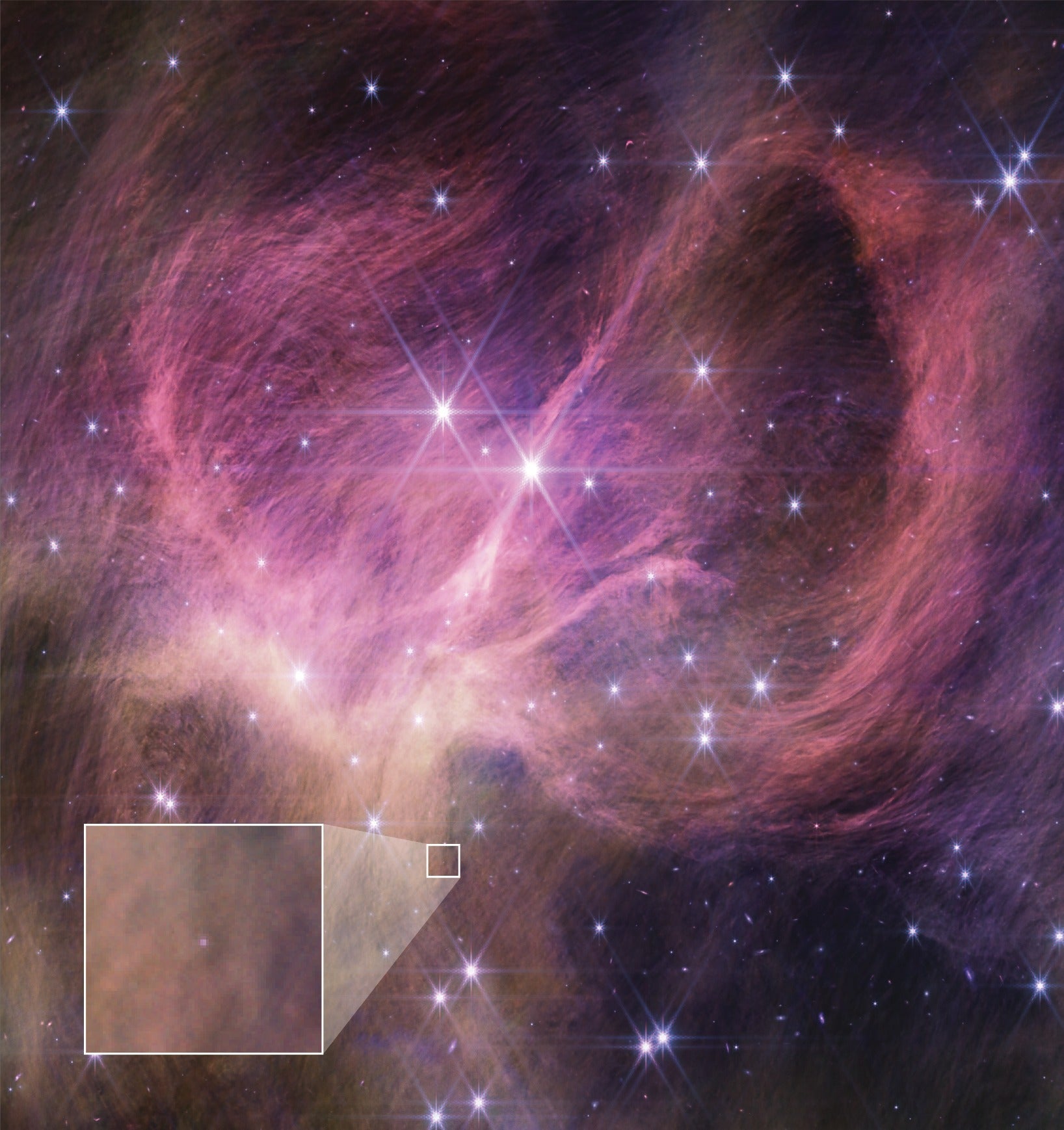
“One basic question you’ll find in every astronomy textbook is: What are the smallest stars [to exist in the universe]? That’s what we’re trying to answer,” said the lead author of a new study Kevin Luhman of Pennsylvania State University.
This past December, the high sensitivity of the James Webb Space Telescope (JWST) helped an international team identify the new record holder: a tiny, free-floating brown dwarf with only 3 to 4 times Jupiter’s mass — about 300 times smaller than the Sun.
Brown dwarfs are objects that blur the lines between what differentiates a star from a planet. They form just like stars (when a dense cloud of gas collapses into itself from strong gravitational force), but never reach the required minimum of temperature or density to begin fusing and become luminous — earning themselves the nickname “failed stars.” Dwarfs are smaller than low-mass stars (less than 2 solar masses) but can be up to 70 times Jupiter’s mass and have planet-like atmospheres.
On the hunt
The research team targeted the star cluster IC 348 for its relatively young age, less than 5 million years old, and its rich population of about 500 members. Because it’s a star-forming region lying around 1,000 light-years away in Perseus, any newly-formed brown dwarfs are still glowing in infrared light from the leftover heat of their formation.
JWST’s Near-Infrared Camera captured three brown dwarfs, ranging from 3 to 8 times Jupiter’s mass and 830 to 1,500 degrees Celsius (1,500 to 2,700 degrees Fahrenheit), in IC 348. The team was able to determine the mass of the smallest brown dwarf through computer models; but how a tiny brown dwarf could’ve formed from a small cloud of gas in an environment with weaker gravitation, remains a true puzzle. Once this is understood, astronomers will have a better understanding of the star formation process.
That’s not all
Since brown dwarfs straddle the definitions solely for stars and for planets, Luhman’s team was also able to expand the current understanding of exoplanets.
Out of the entire survey taken, the chemical signatures of two brown dwarfs stood out for having a molecule containing both hydrogen and carbon atoms — simply called hydrocarbon. Hydrocarbon is present in the atmospheres of Saturn and its satellite Titan and in the interstellar medium, but “this is the first time we’ve detected this molecule in the atmosphere of an object outside our Solar System,” said Catarina Alves de Oliveira of the European Space Agency and principal investigator on the observing program.
Current models do not support the existence of these brown dwarfs, which leaves astronomers second-guessing whether or not these objects are indeed brown dwarfs, and instead, are ejected rogue exoplanets. But despite the doubts, such planets existing is quite uncommon and unlikely given the star cluster’s age. So, astronomers are still team brown dwarf!
Further studies and longer, more expansive surveys should help advance the quest for finding the smallest brown dwarf, as well as understanding the formation process of stars and planets.









